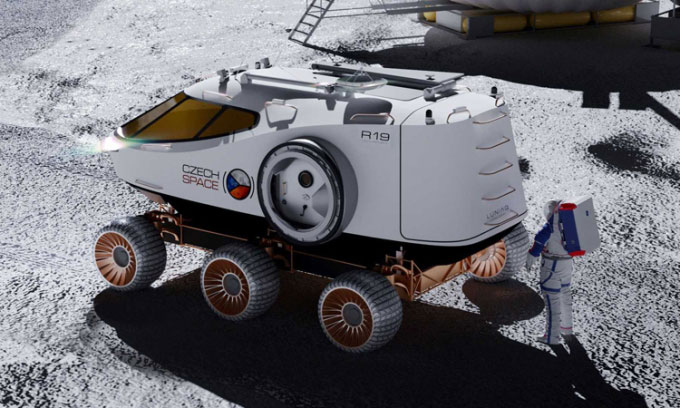The Luniaq lunar electric vehicle features transparent aluminum windows and utilizes airless tire technology to navigate the Moon’s rugged surface.
UK-based Xtend Design has unveiled a concept for a new lunar electric vehicle named Luniaq, inspired by Skoda’s Enyaq, during the Czech Space Week held from November 5 to 12. The lead designer of Luniaq is space architect Tomas Rousek, who previously worked at NASA’s Jet Propulsion Laboratory (JPL).

Luniaq four-seat electric vehicle design for the Moon. (Photo: Xtend Design)
Luniaq can accommodate up to four astronauts and has the capability for autonomous operation and remote control. The vehicle is equipped with two hatches on either side for connecting to modules of a lunar base. The rear of the vehicle features a separate changing area that allows astronauts to don their space suits without letting harmful lunar dust enter the cabin.
Power is stored in solid-state batteries that can be charged using solar panels mounted on the roof of the vehicle. The solar panels can unfold into a fan shape, enabling charging while the vehicle is parked or moving slowly. The roof is also equipped with a cooling system for daytime use and an antenna for communication with the lunar base, Earth, space stations, and satellites.
Luniaq utilizes Michelin’s airless Tweel tire technology, which is puncture-resistant. The large, flexible wheels will help the vehicle traverse the Moon’s uneven terrain more easily.
The vehicle’s large windows are made from transparent aluminum, offering better resistance to impacts from debris or small rocks than glass. Polyethylene shields will protect astronauts from radiation. Meanwhile, a stereo camera system mounted on the roof will survey the terrain and assist with the vehicle’s autonomous operation.
Although it remains uncertain whether the vehicle will enter production, the new design reflects humanity’s aspirations to set foot on celestial bodies beyond Earth. “We want to inspire people about how we continue to develop technology and about living and driving in places beyond Earth in the future,” Rousek shared.


















































